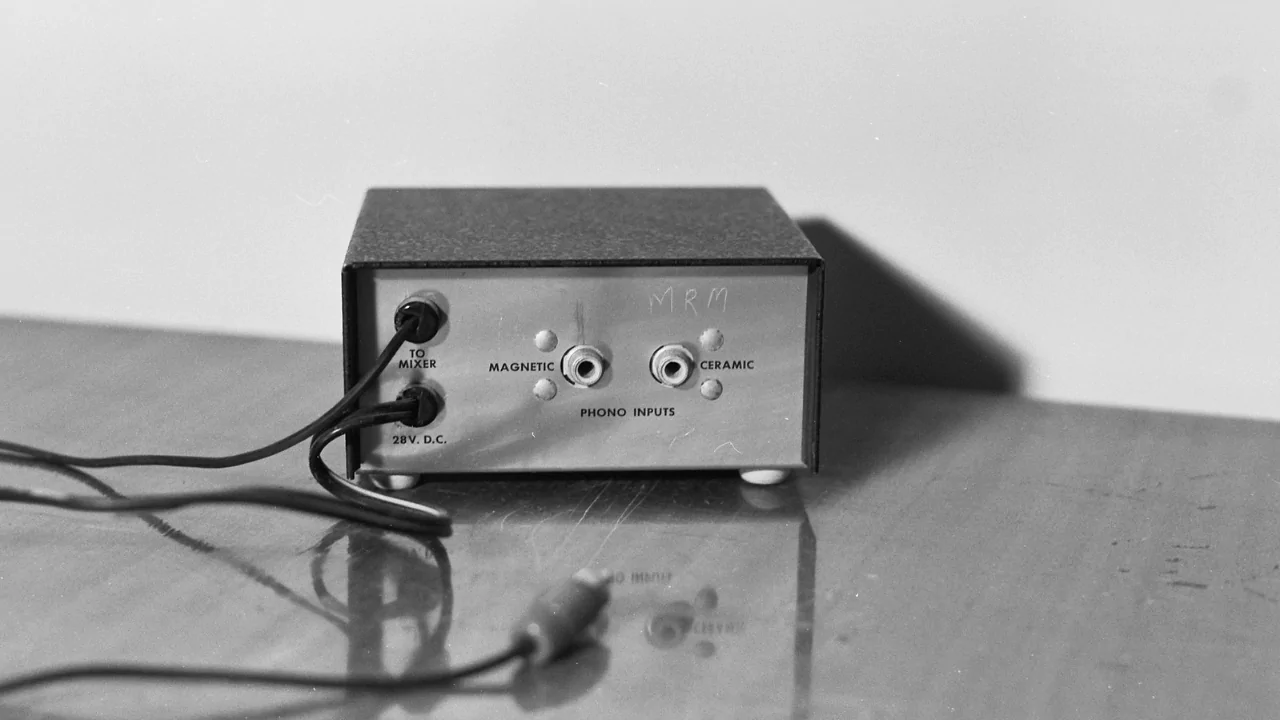A phono preamp is a device that boosts the low-level signal from a turntable to a line-level signal that can be processed by an amplifier or a speaker. It is an essential component for vinyl lovers who want to enjoy the rich and warm sound of their records.
In This Article:
Understanding Phono Preamps
Definition
A phono preamp, also known as a phono stage or an RIAA preamp, is a type of preamplifier that amplifies the weak electrical signal from a phono cartridge (the part that holds the stylus or needle) to a standard line-level signal that can be fed into an amplifier or a speaker. The phono preamp also applies a special equalization curve, called the RIAA curve, to the signal to correct the frequency response of the vinyl record.
Purpose and Function
The purpose of a phono preamp is to make the signal from a turntable compatible with the input of an amplifier or a speaker. The signal from a phono cartridge is very low, typically around 0.5 millivolts for a moving magnet cartridge and 0.05 millivolts for a moving coil cartridge. This is much lower than the line-level signal, which is around 150 millivolts. If the signal from a turntable is directly connected to an amplifier or a speaker, the sound will be very faint and distorted.
The function of a phono preamp is to boost the signal from a turntable by about 1000 times for a moving magnet cartridge and 10000 times for a moving coil cartridge. This brings the signal to the same level as other audio sources, such as a CD player or a smartphone. The phono preamp also applies the RIAA curve to the signal to restore the original sound of the vinyl record. The RIAA curve is a standard equalization curve that reduces the bass and boosts the treble frequencies during the recording process to fit more information on the vinyl groove and reduce surface noise. The phono preamp reverses this process during the playback to bring back the natural balance of the sound.
Types of Phono Preamps
Moving Magnet
A moving magnet phono preamp is designed for phono cartridges that have a magnet attached to the stylus. The magnet moves inside a coil of wire when the stylus traces the vinyl groove, generating a small electrical signal. A moving magnet phono preamp has a high input impedance, typically around 47 kilohms, and a low gain, typically around 40 decibels. A moving magnet phono preamp is the most common and affordable type of phono preamp, and it works well with most turntables and amplifiers.
Moving Coil
A moving coil phono preamp is designed for phono cartridges that have a coil of wire attached to the stylus. The coil moves inside a magnetic field when the stylus traces the vinyl groove, generating a very small electrical signal. A moving coil phono preamp has a low input impedance, typically around 100 ohms, and a high gain, typically around 60 decibels. A moving coil phono preamp is more expensive and rare than a moving magnet phono preamp, and it requires a compatible turntable and amplifier. A moving coil phono preamp offers a higher fidelity and a lower noise than a moving magnet phono preamp, and it is preferred by audiophiles and enthusiasts.
Do You Need a Phono Preamp?
Connecting to an Amplifier
Whether you need a phono preamp or not depends on the type of amplifier or receiver you have. Some amplifiers or receivers have a dedicated phono input that has a built-in phono preamp. In this case, you do not need a separate phono preamp, and you can simply connect your turntable to the phono input. However, some amplifiers or receivers do not have a phono input, or they have a phono input that is not compatible with your phono cartridge. In this case, you need a separate phono preamp, and you can connect your turntable to the phono preamp, and then connect the phono preamp to any line-level input, such as an aux or a CD input.
Built-in Phono Preamps
Some turntables have a built-in phono preamp that can be switched on or off. If your turntable has a built-in phono preamp, and you have an amplifier or a receiver that does not have a phono input, you can switch on the built-in phono preamp and connect your turntable to any line-level input. If your turntable has a built-in phono preamp, and you have an amplifier or a receiver that has a phono input, you can switch off the built-in phono preamp and connect your turntable to the phono input. Alternatively, you can switch on the built-in phono preamp and connect your turntable to any line-level input, but this may result in a double amplification and a distorted sound.
Choosing the Right Phono Preamp
When choosing a phono preamp, there are several factors to consider, such as:
Compatibility
The phono preamp should match the type and specifications of your phono cartridge and your amplifier or receiver. You should check the input impedance, the gain, and the equalization curve of the phono preamp, and make sure they are suitable for your phono cartridge and your amplifier or receiver.
Quality
The phono preamp should have a low noise, a low distortion, and a high accuracy. You should look for a phono preamp that has a good power supply, a good circuit design, and good shielding. You should also look for a phono preamp that has a solid construction, a durable casing, and a reliable connection.
Features
The phono preamp may have some additional features that can enhance your listening experience, such as:
- A subsonic filter: This is a feature that filters out the very low frequencies that are below the human hearing range, such as the rumble from the turntable motor or the vibration from the floor. This can improve the clarity and the dynamics of the sound, and reduce the wear and tear of the stylus and the vinyl record.
- A mono switch: This is a feature that converts the stereo signal to a mono signal, which can be useful for playing some old records that were recorded in mono. This can reduce the noise and the distortion, and improve the balance and the imaging of the sound.
- A gain switch: This is a feature that allows you to adjust the gain of the phono preamp, which can be useful for fine-tuning the volume and the output level of the signal. This can help you achieve a better match with your amplifier or receiver, and avoid overloading or underloading the input.
Recommended Phono Preamps
Here are some examples of phono preamps that are highly rated and recommended by experts and users:
- Schiit Mani: This is a versatile and affordable phono preamp that can work with both moving magnet and moving coil phono cartridges. It has four switchable gain modes, a subsonic filter, and a passive RIAA network. It has a low noise, a low distortion, and a high performance. It has a simple and elegant design, a sturdy metal chassis, and a solid connection.
- Pro-Ject Phono Box S2: This is a compact and stylish phono preamp that can work with both moving magnet and moving coil phono cartridges. It has a dual-mono circuit design, a subsonic filter, and a switchable input impedance and capacitance. It has a low noise, a low distortion, and a high accuracy. It has a sleek and modern design, an aluminum casing, and a gold-plated connection.
- Rega Fono MM MK3: This is a dedicated and refined phono preamp that is designed for moving magnet phono cartridges. It has a discrete transistor circuit design, a high-quality power supply, and a precise RIAA equalization. It has a low noise, a low distortion, and a high fidelity. It has a classic and elegant design, a robust metal case, and a reliable connection.





